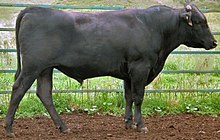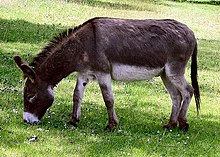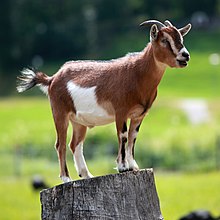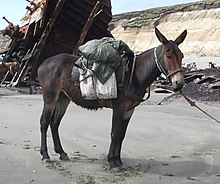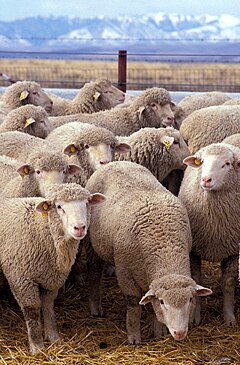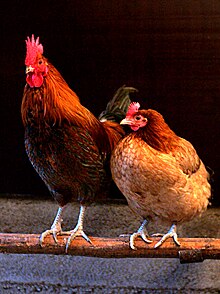Livestock is commonly defined as domesticated animals raised in an agricultural setting to produce labour and commodities such as meat, eggs, milk, fur, leather, and wool. The term is sometimes used to refer solely to those that are bred for consumption, while other times it refers only to farmed ruminants, such as cattle and goats.

The breeding, maintenance, and slaughter of livestock, known as animal husbandry, is a component of modern agriculture that has been practiced in many cultures since humanity’s transition to farming from hunter-gatherer lifestyles. Animal husbandry practices have varied widely across cultures and time periods. Originally, livestock were not confined by fences or enclosures, but these practices have largely shifted to intensive animal farming, sometimes referred to as “factory farming”.
Now, over 99% of livestock are raised on factory farms. These practices increase yield of the various commercial outputs, but have also led to negative impacts on animal welfare and the environment. Livestock production continues to play a major economic and cultural role in numerous rural communities.
Livestock as a word was first used between 1650 and 1660, as a merger between the words “live” and “stock”. In some periods, “cattle” and “livestock” have been used interchangeably. Today, the modern meaning of cattle is domesticated bovines, while livestock has a wider sense.
Deadstock is defined in contradistinction to livestock as “animals that have died before slaughter, sometimes from illness”. It is illegal in many countries, such as Canada, to sell or process meat from dead animals for human consumption.
Animal-rearing originated during the cultural transition to settled farming communities from hunter-gatherer lifestyles. Animals are domesticated when their breeding and living conditions are controlled by humans. Over time, the collective behaviour, lifecycle and physiology of livestock have changed radically. Many modern farm animals are unsuited to life in the wild.
Types of animals
The term “livestock” is nebulous and may be defined narrowly or broadly. Broadly, livestock refers to any breed or population of animal kept by humans for a useful, commercial purpose. This can mean domestic animals, semidomestic animals, or captive wild animals. Semi domesticated refers to animals which are only lightly domesticated or of disputed status. These populations may also be in the process of domestication.
Animal / Type | Domestication status | Current commercial uses | Picture |
Bali cattle | domestic | Meat, milk, draught | |
Cattle | domestic | ||
Donkey | domestic | Mount, pack animal, draught, meat, milk | |
Mammal, herbivore | domestic | Milk, meat, wool, leather, light draught | |
domestic | Meat, pet | ||
Horse: Mammal, herbivore | domestic | Mount, draught, milk, meat, pet, pack animal | |
Mule | domestic | Mount, pack animal, draught | |
Pig | domestic | ||
Rabbit | domestic | Meat, fur, leather, pet, research | |
Sheep | domestic | Wool, milk, leather, meat (lamb and mutton) | |
Zebu | domestic | Meat, milk, draught, hides | |
Chicken | Domestic | Meat, Eggs |
Other birds raised in Zambia include: turkeys, ducks, geese, peacock, pigeons, etc



